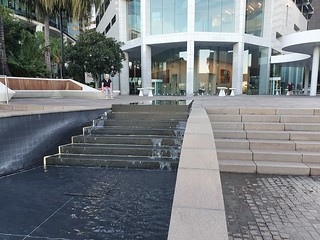The sawpits were situated where Herschel Street joins the Riverside Expressway. Logging gangs from the ‘jungle’ in South Brisbane floated the cedar and hoop-pine tree trunks across the river to this site.
Trees were also cut along the Albert and Logan Rivers and Oxley Creek and huts were erected for the prisoners. Prisoners working at these place where known as the ‘better class’ and were now working in chains.
At the mouth of the Brisbane River there was a small site where prisoners were burning mangrove trees for ash used for soap making.
The old Brick Kiln stood where now Makerston road ends on North Quay. It was built in 1826 and was used to fire bricks for various buildings in the settlement. The kiln was later moved next to the tank. It is quite possible that the bricks used for building the windmill situated on what is now Wickham Terrace came from this kiln. Unfortunately these bricks are no longer visible. In order to protect its vulnerable structure the bricks are covered by a layer of cement.

The north eastern part of the Convict Settlement was used for agriculture. There were a couple of ponds created in the low laying area by the creek that was running through this area. Situated roughly where now the Supreme Court stands between George and Roma Streets. The creek was given the name Wheat Creek (but they actually grew corn in its flats). Part of the creek was fed by water courses running down the hill immediately to the north (Spring Hill). From the ponds it went to where Town Hall is standing now it followed a large section of Adelaide Street and Creek Street to flow into the Brisbane River where now Harry Seidler’s Riverside building stands. The water feature here depicts the creek flowing under it.
In 1829, a small dam or tank was built on the creek and stored enough water to supply the settlement for almost 12 months. The Tank remained as Brisbane’s main source of water for the next 30 years.

Dr Bowman reported in 1829 that the water was unfit for use. The water in the ponds is stagnant and becomes putrid. In the dry season this was even worse and is a main cause of the many sick.
The course of the creek can still be followed through the drains along side the street indicating that the water flows in the creek. (Upper Roma Street, Roma Street, George Street, Albert Street, King George Square, Adelaide Street, Creek Street, Riverside Centre).
